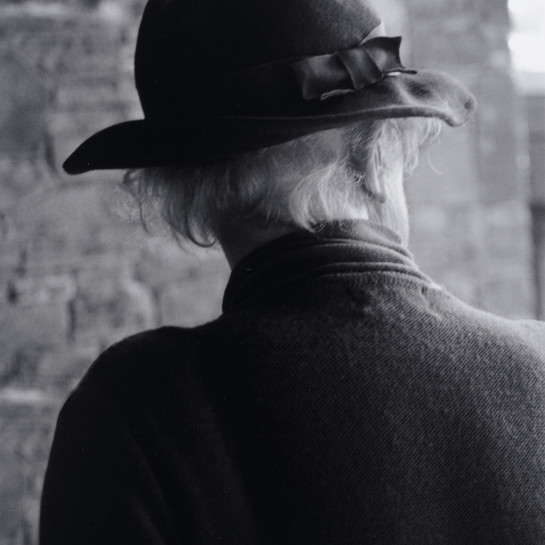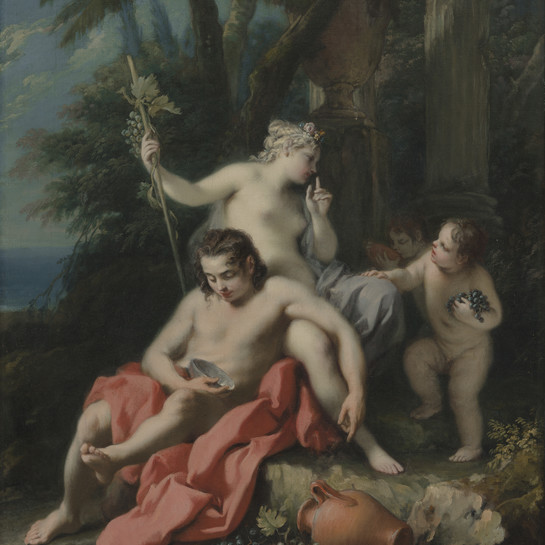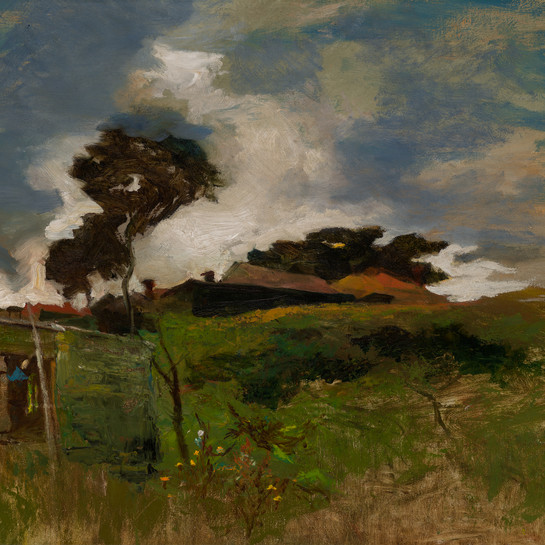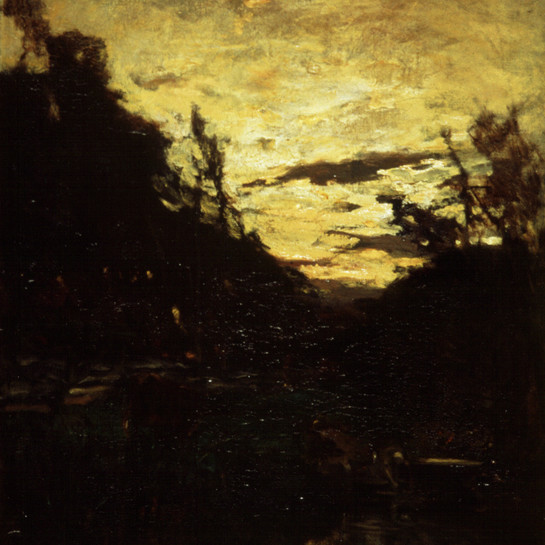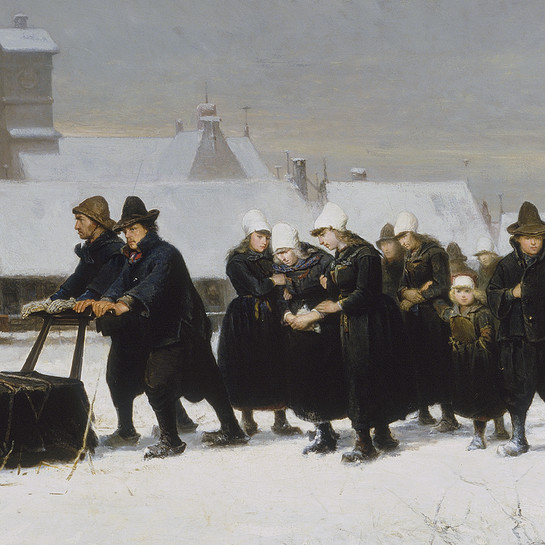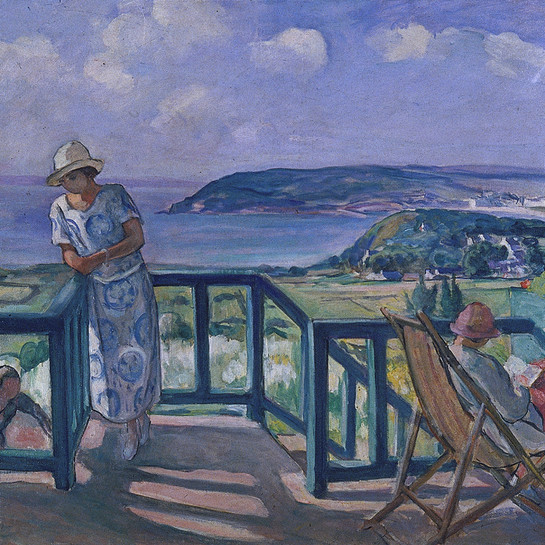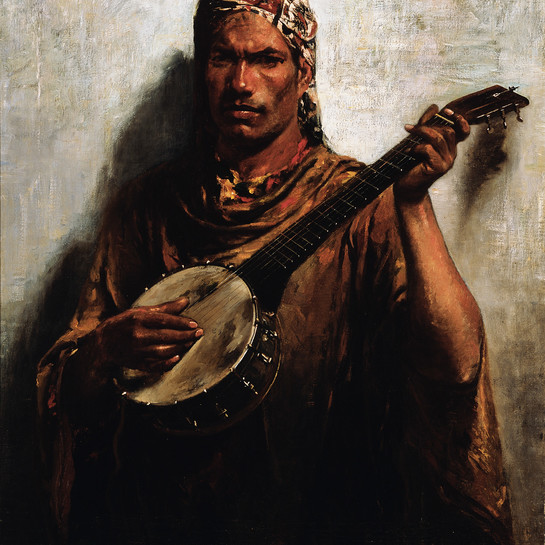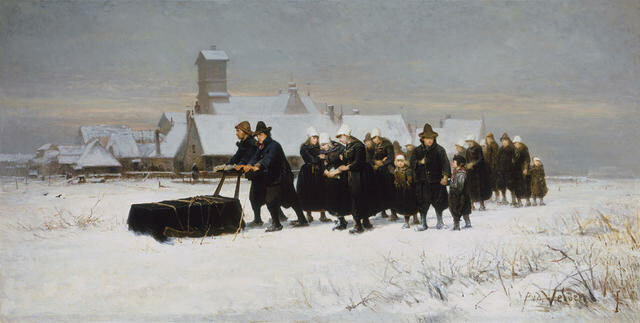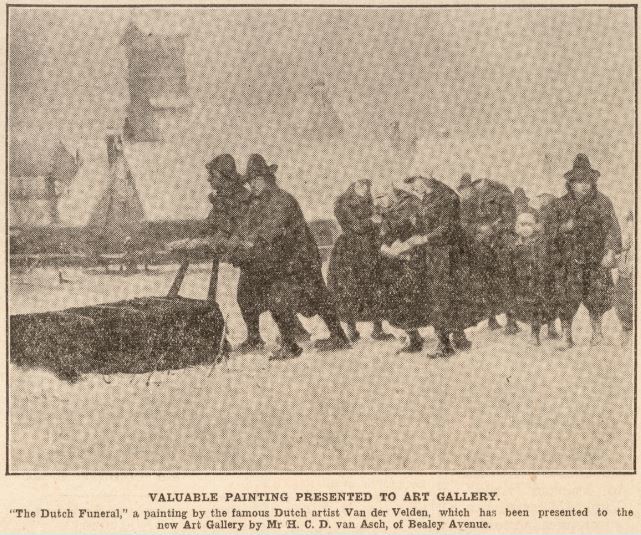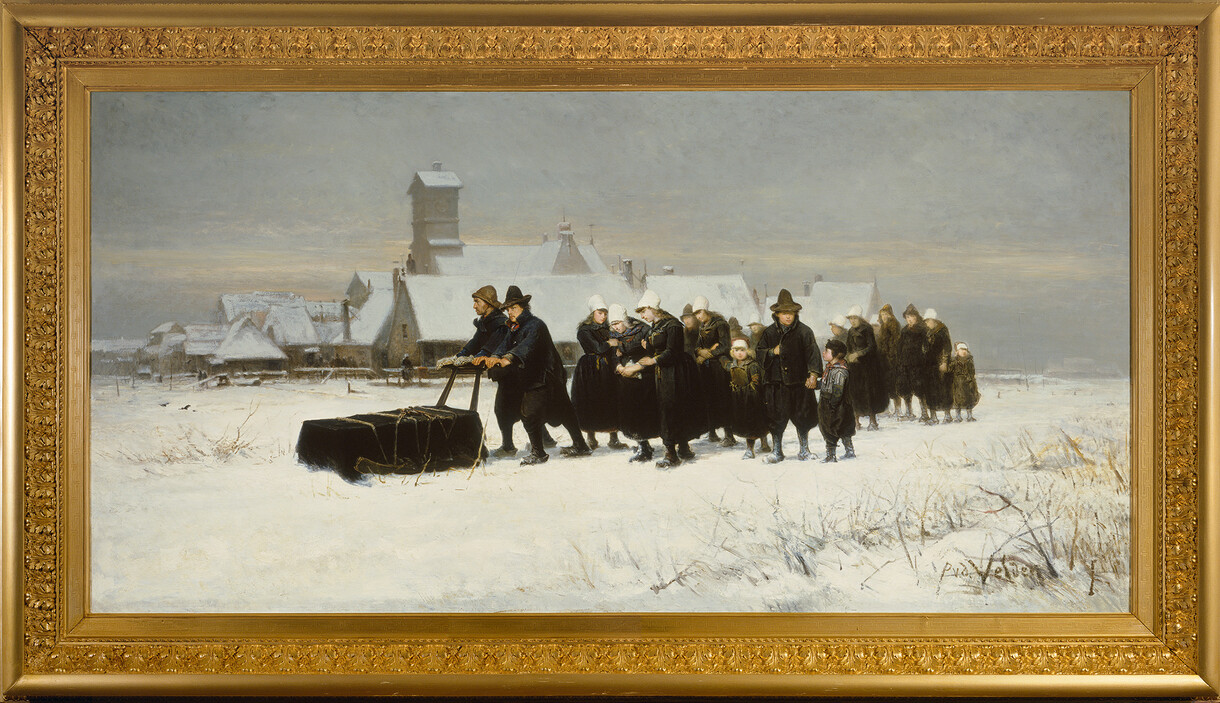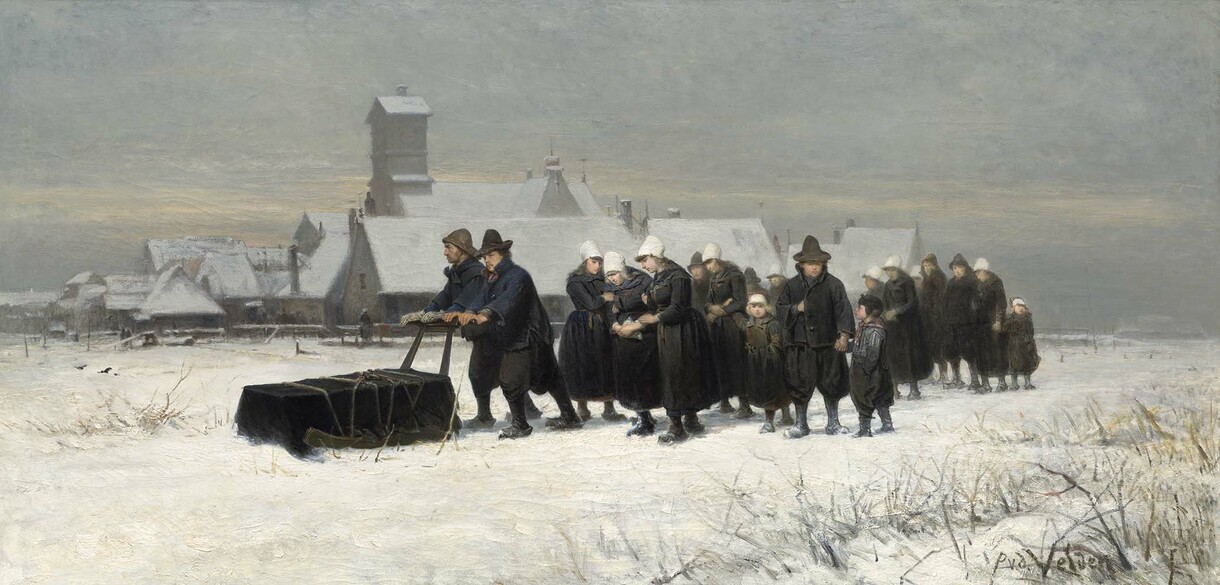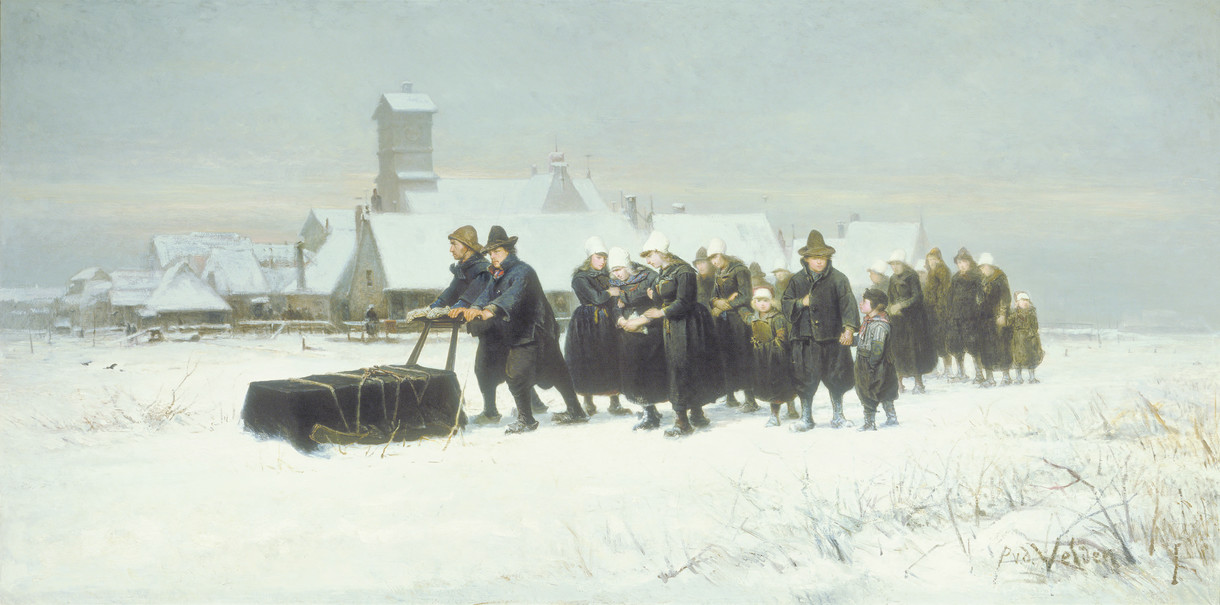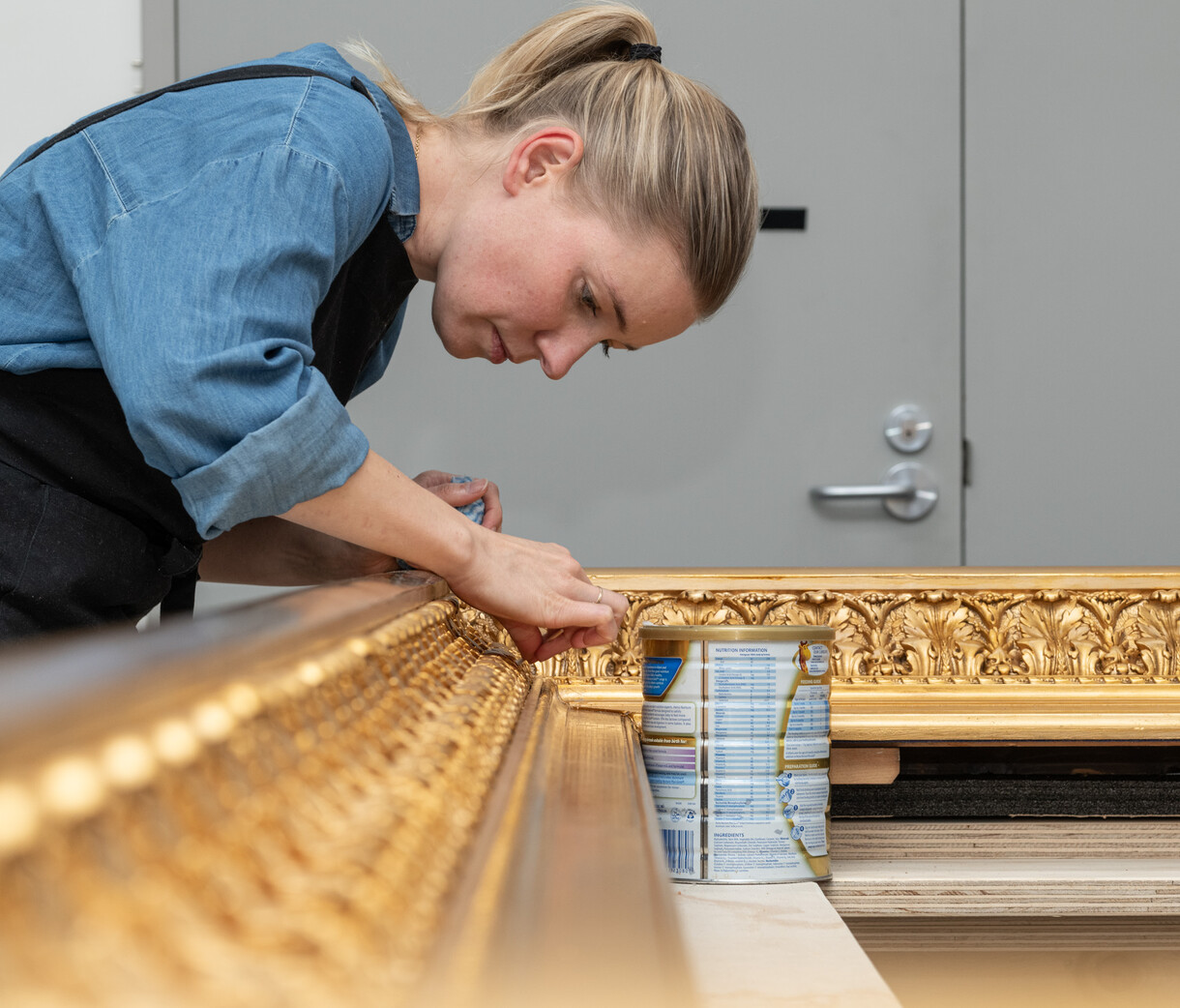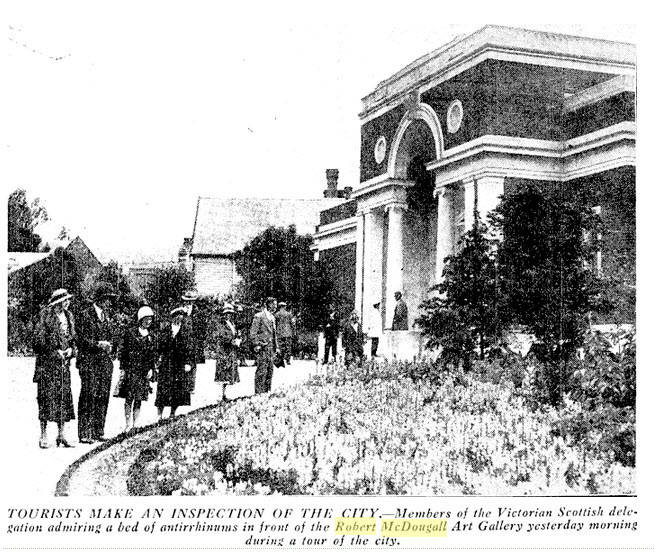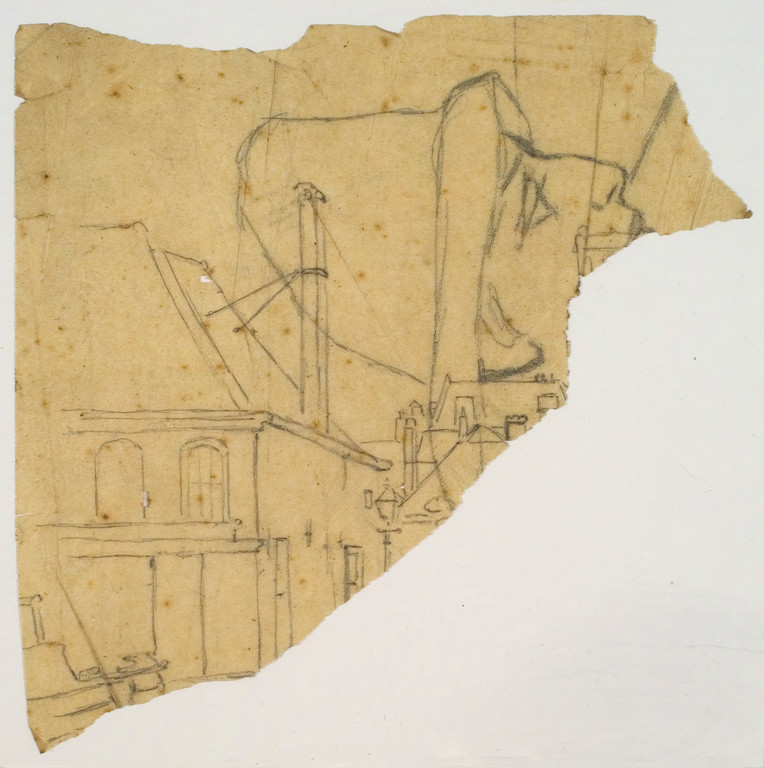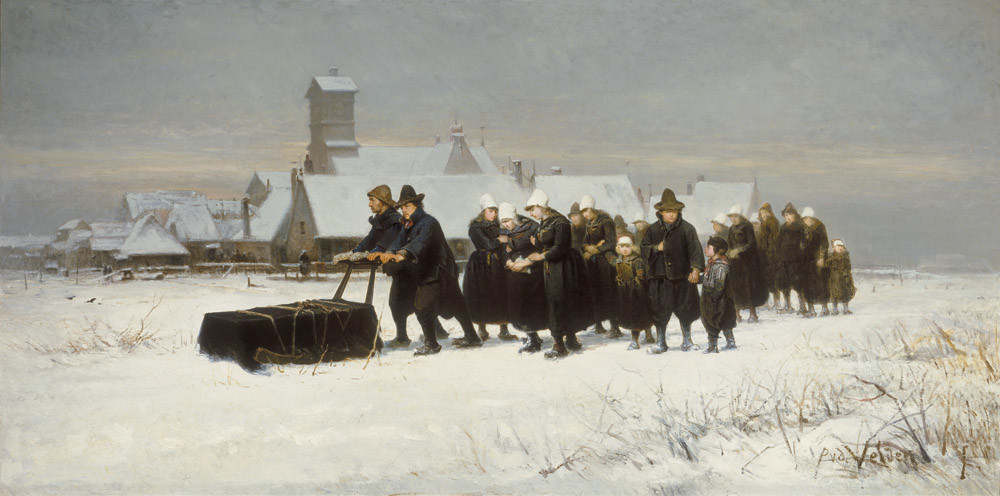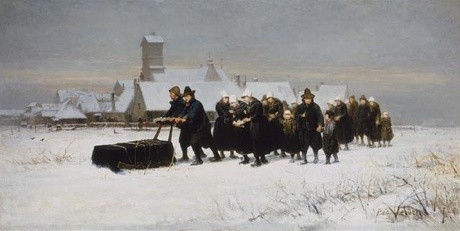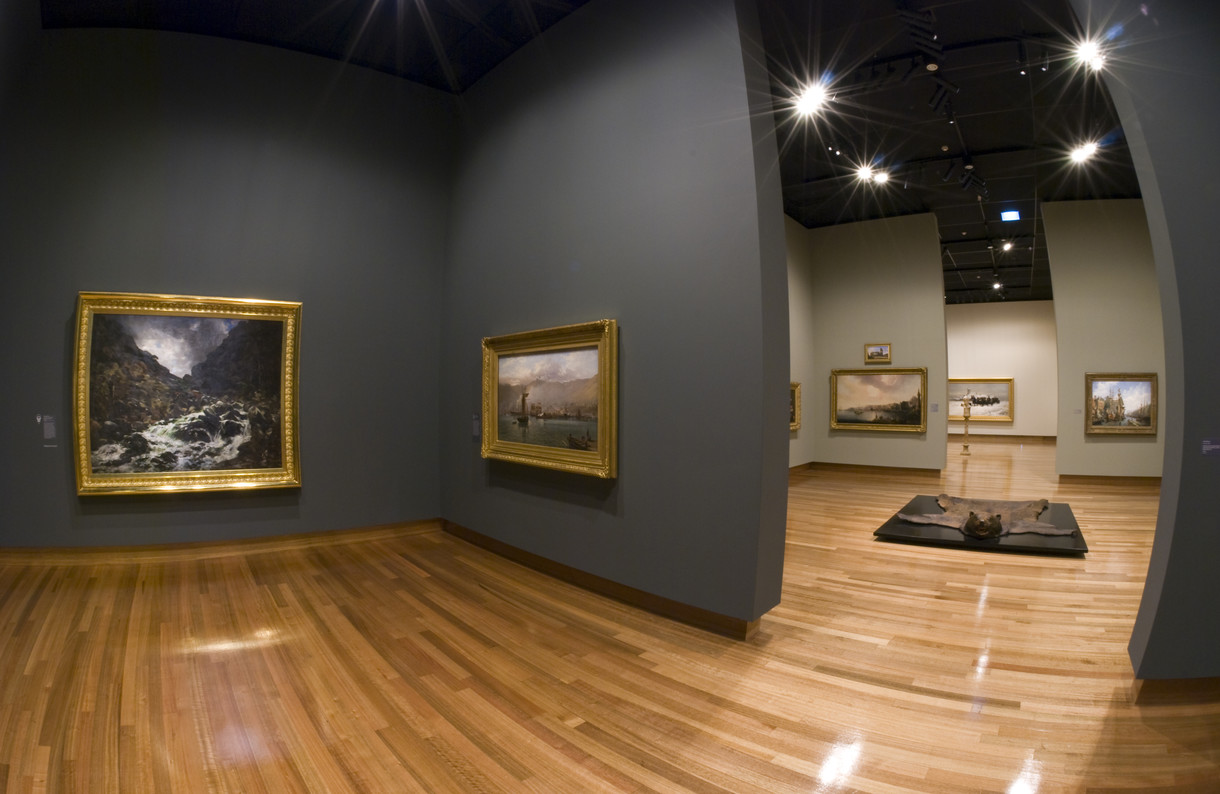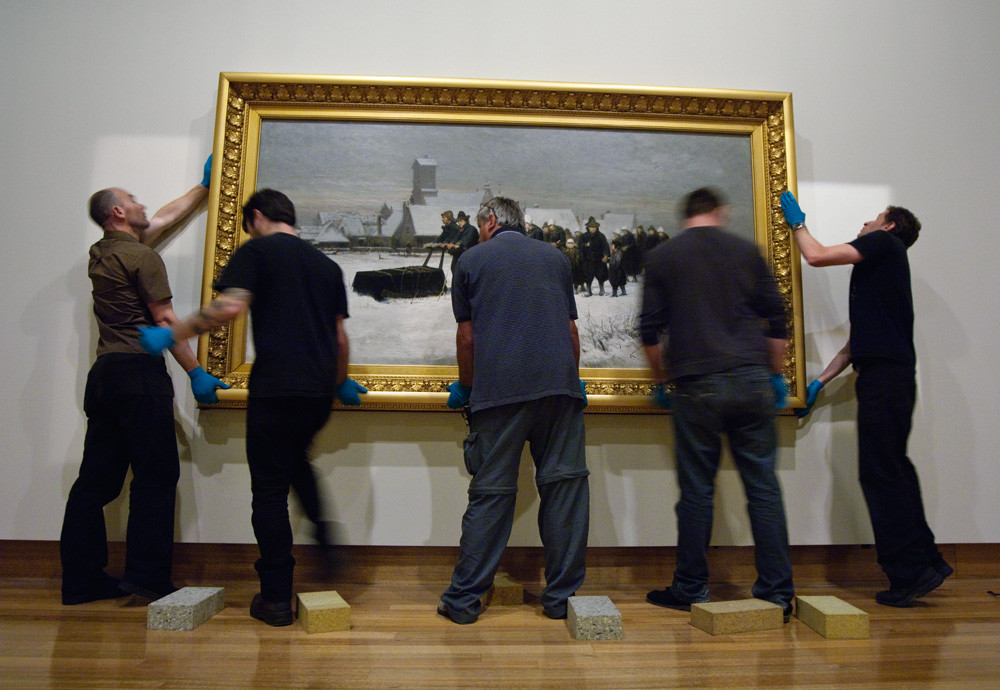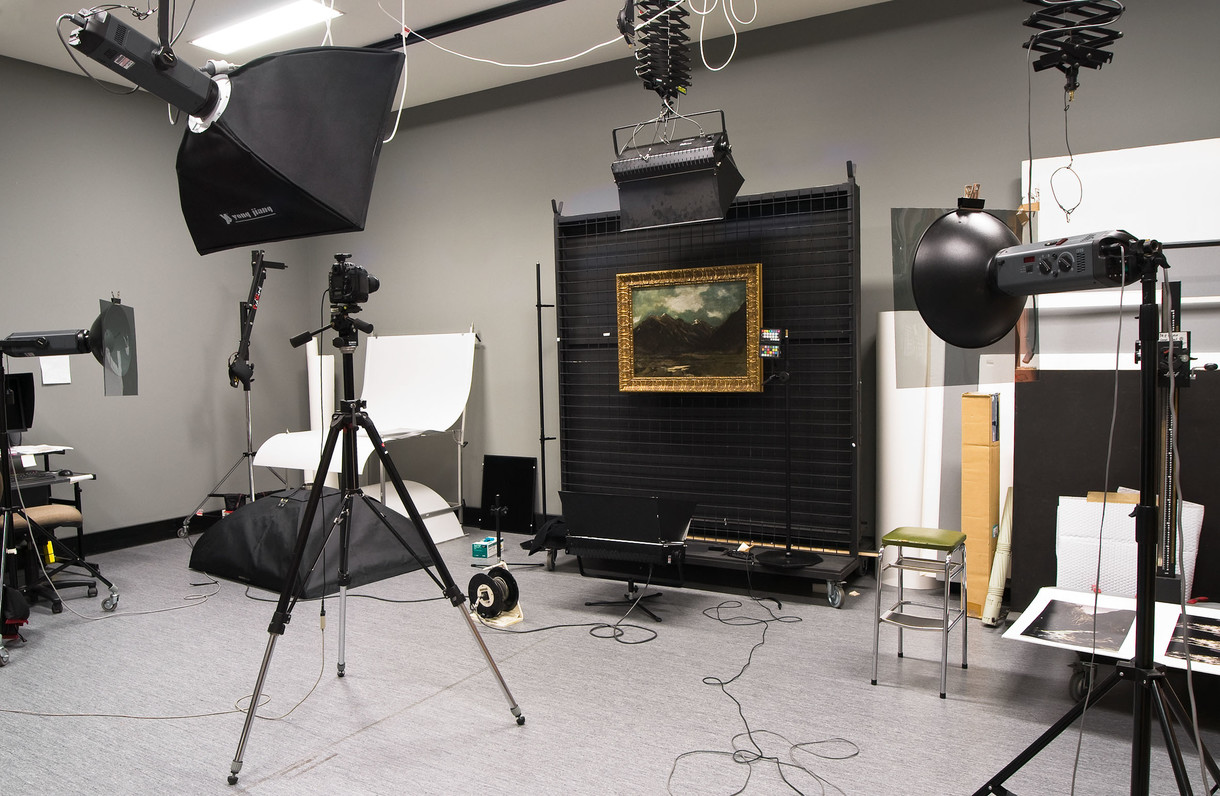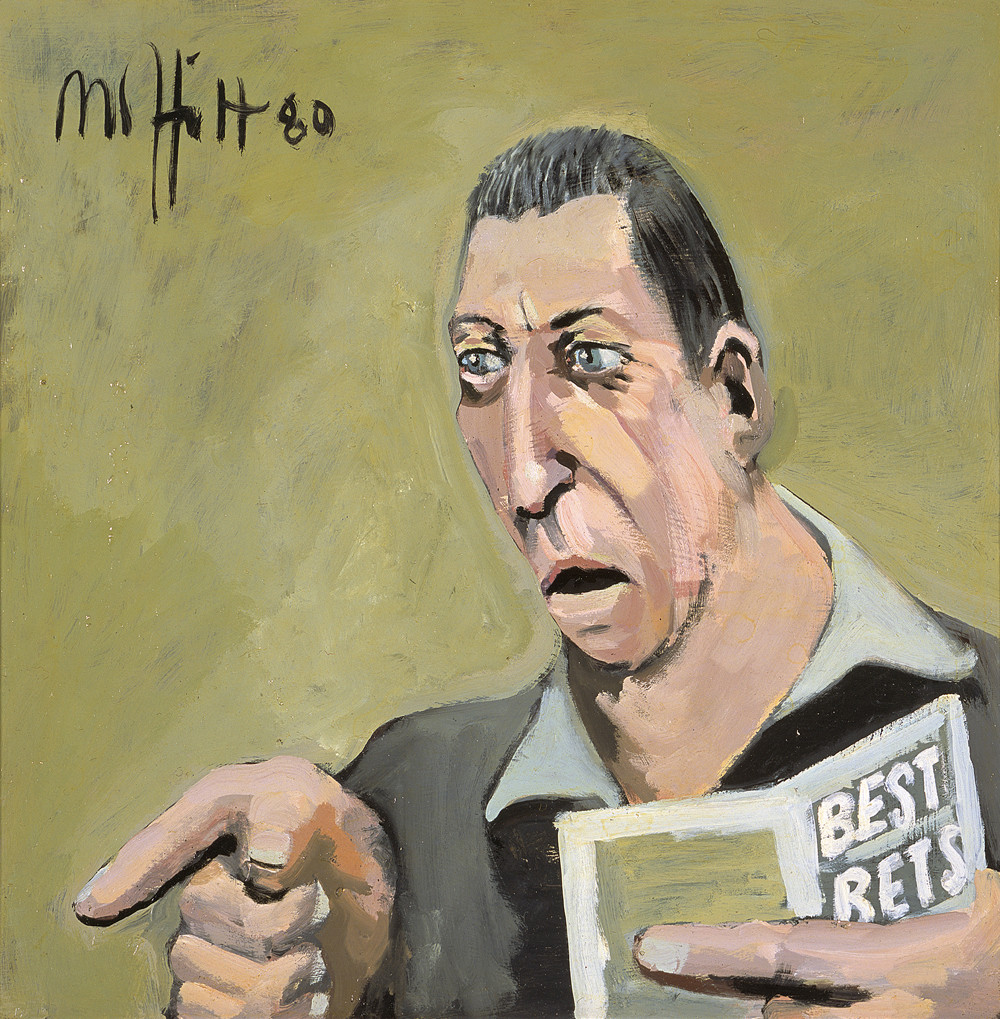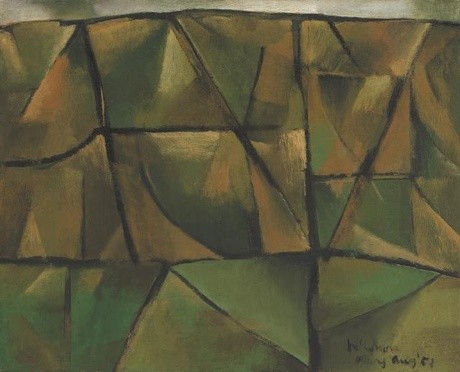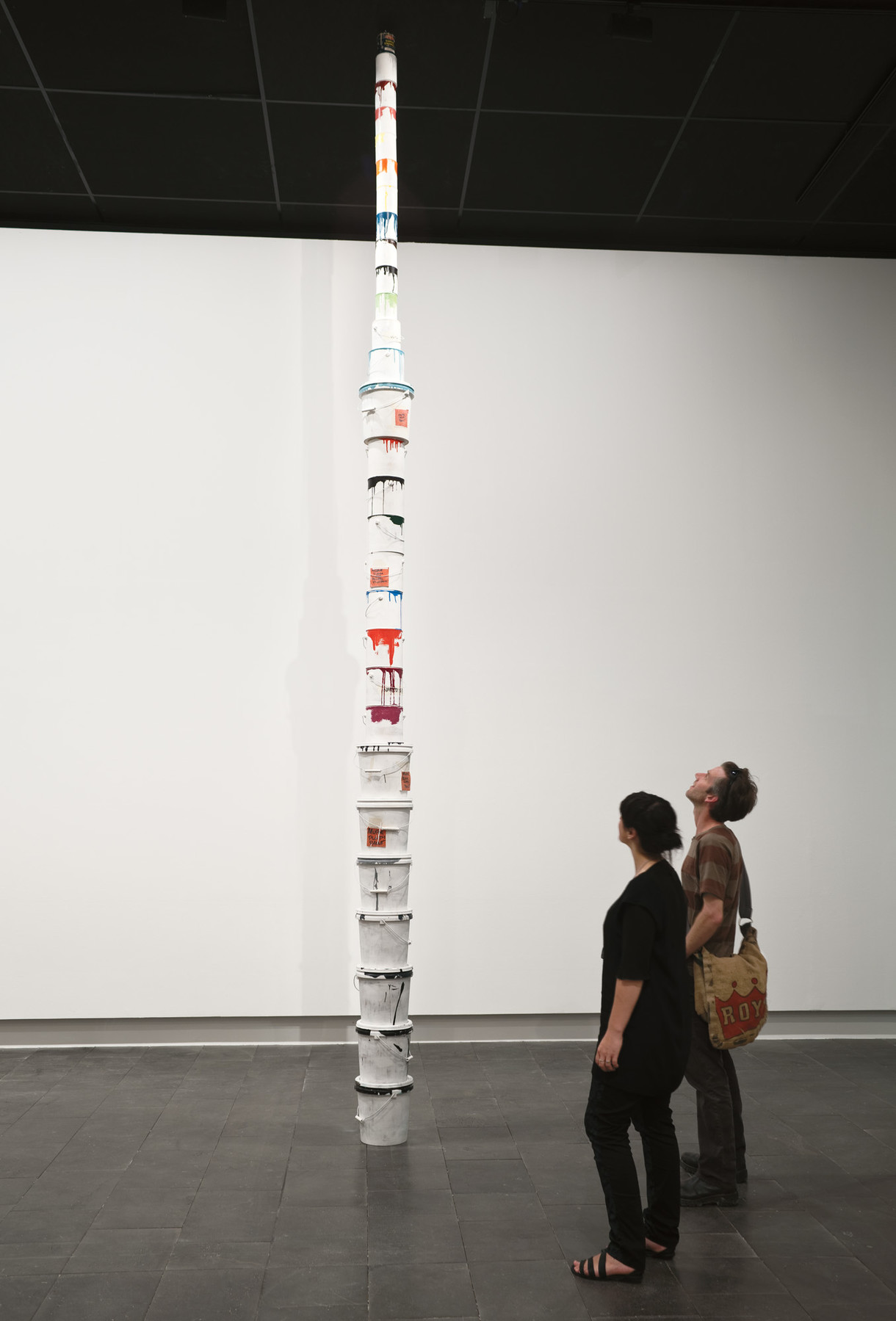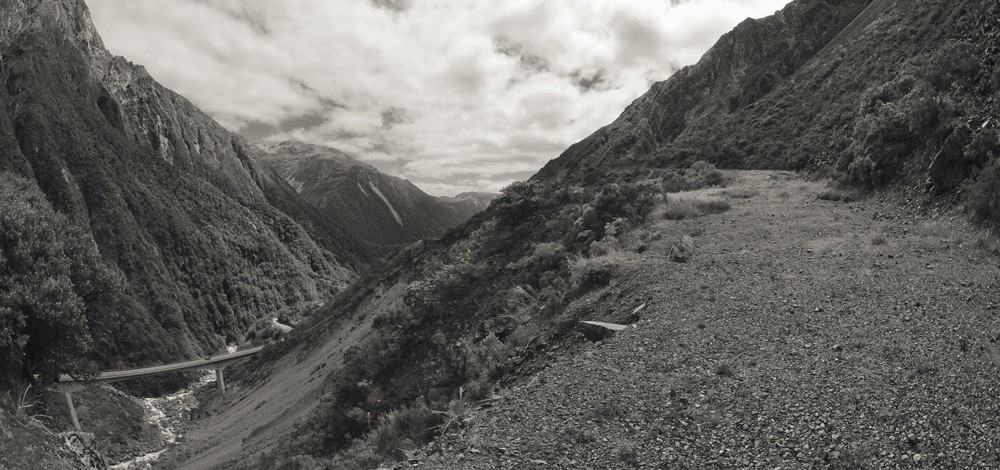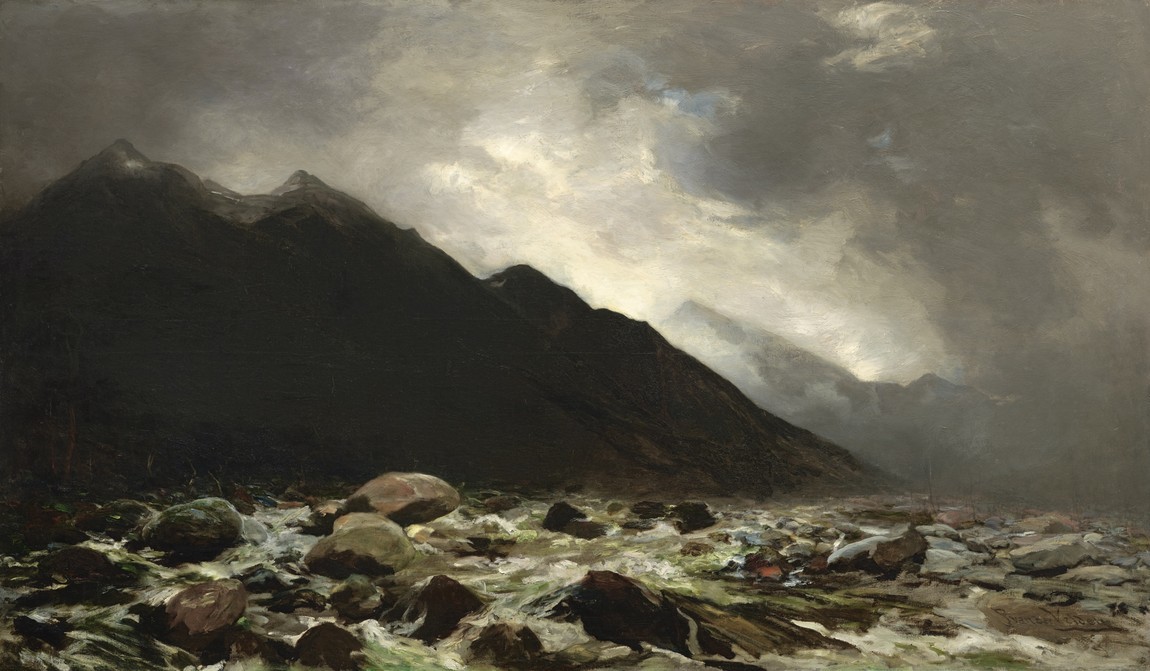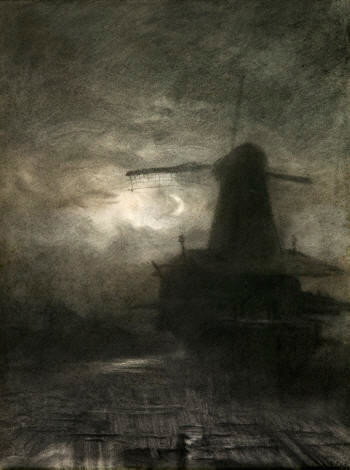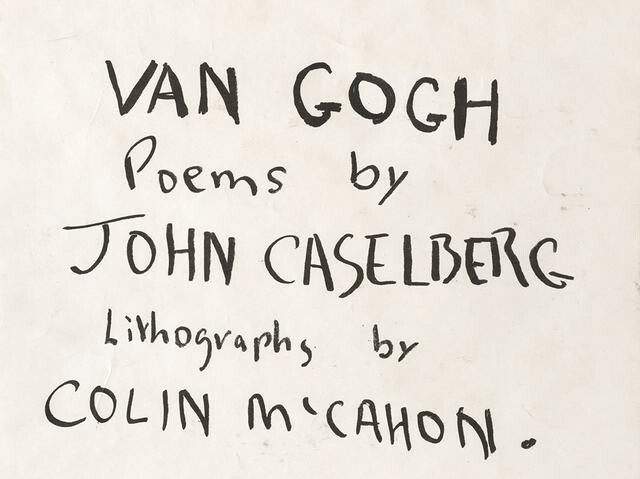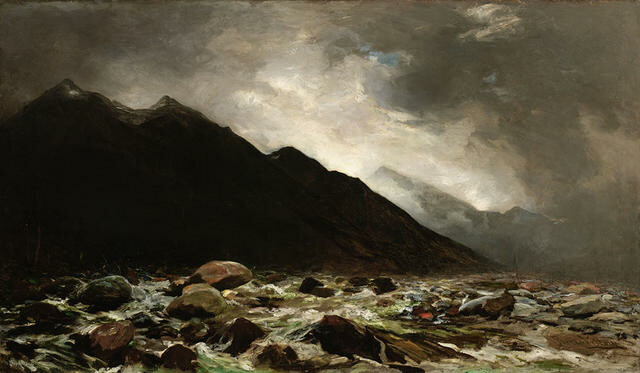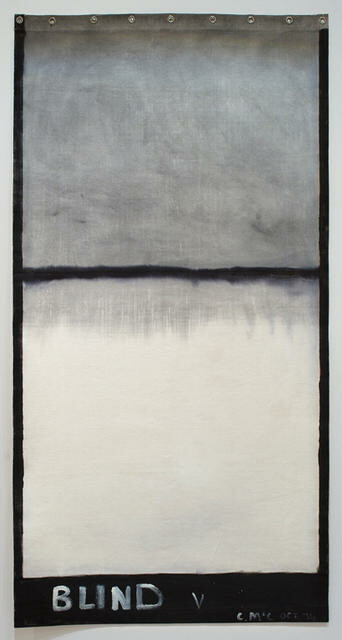Petrus van der Velden
Netherlands / Aotearoa New Zealand / Australia, b.1837, d.1913
Burial in the Winter on the Island of Marken [The Dutch Funeral]
- 1872
- Oil on canvas
- Gift of Henry Charles Drury van Asch, 1932
- 1645 x 2900 x 145mm
- 69/125
- View on google maps
Tags: black (color), churches (buildings), coffins, cold, deaths, families, funerals, grief, hats, melancholy, mourning, people (agents), processions, religious buildings, rings (jewelry), sleds, snow (precipitation), white (color)
Research for the exhibition Closer (16 December 2017 – 19 August 2018) resulted in the restoration of this work's orginal title. In Dutch 'Begrafenis in den winter op het eiland Marken' and in English 'Burial in the winter on the island of Marken'.
Combining a wintry landscape with an equally bleak portrayal of loss, this painting has captivated many visitors since joining the Gallery’s collection in 1932. Small details, like snow-dusted shoes, noses red with cold, and a woman folded over by grief, are observed with such accuracy and tenderness by Petrus van der Velden that this funeral procession on an isolated Dutch island feels just as real as it looks. However, its most important figure – the reason for the gathering and for all the grief we see – remains unseen. The deceased, said to have been a drowned local fisherman, is present only in the dark shape of the coffin – and in the faces of those left behind.
(Absence, May 2023)
Exhibition History
New dawn fades 10 November 2018 – 23 February 2020
One of Petrus van der Velden’s most significant paintings, Burial in the winter on the island of Marken arrived in Christchurch several years before the artist. It was brought to New Zealand by Gerritt van Asch, the pioneering educator for the hearing impaired, who had purchased it from van der Velden in Holland sometime before 1879. Van der Velden himself arrived in Christchurch, sponsored by van Asch, in mid 1890 and made an immediate impact on New Zealand art circles of the time. His genre paintings like this one were widely appreciated by the public and the press often described him in glowing terms as a “distinguished Dutch artist”. Holland’s loss was New Zealand’s gain and van der Velden went on to paint one of New Zealand’s most significant bodies of paintings, his famous Otira series, from the late nineteenth century.
Brought to light, November 2009- 22 February 2011
Petrus van der Velden’s masterpiece The Dutch funeral forms part of a wider narrative sequence when placed in the context of his other Marken funeral paintings. Collectively the series tells the story of the death of a fisherman and his body’s journey from the beach to his village in a funeral barge; the procession of his casket from the church to the cemetery is the subject of The Dutch funeral. The tale of loss is seen in the individual faces following the coffin, from the grim staunchness of the men pushing the coffin sled, to the inconsolable women at the centre of the group and the pensive curiosity of the two children.
McCahon / Van der Velden,18 December 2015 – 7 August 2016
McCahon often chose not to frame his paintings. He once said:
You don’t paint paintings to hang them up with frames around them. The frame is necessary frequently to hang them with but it’s not part of the work. It’s not part of the story and I think they can be dispensed with. […] I think it cancels the immediacy of the work.
We’ve unframed this major work by van der Velden to allow a clearer comparison with McCahon's 'Blind V'.
Inspired by an actual drowning of a fisherman that occurred near the Island of Marken during one of Van der Velden’s visits there, this painting is in the style of the 19th century Romantic Realist work of the Dutch School of painters. They were concerned with portraying the harsh conditions of the Dutch working class with naturalism and objectivity. Van der Velden has treated the humble family funeral with the scale and focus previously reserved for grand events. The strong contrast of black and white adds to the human drama emphasised by the huddled figures. Born in Rotterdam, Van der Velden gave up his business as a lithographer in 1867 and began to paint marine subjects. The following year he registered at the Rotterdam Academy of Art, and a year later at the Academy, Berlin. In 1890 he emigrated to Christchurch, New Zealand, with his family. They lived in Sydney from 1898 to 1904, then returned to New Zealand. (Opening Gallery hang, May 2003)
This work belongs to the 19th century Dutch realist school, which focused on the lives of the peasants and country villagers. Here van der Velden has focussed on a funeral, confining his colours to the narrow tonal range favoured by the Dutch painters of the Hague School. The strong contrast of black and white also adds to the human drama of the huddled figures. 'The Dutch Funeral' comes from a series which followed an 1869 visit Van der Velden made to the Island of Marken, in the Zeider Zee, Holland. This work was also influenced by the Dutch realist Josef Israels, who was so impressed when 'The Dutch Funeral' was exhibited at The Hague in 1872, that he awarded van der Velden a special medallion.
(Label from before 2003)
